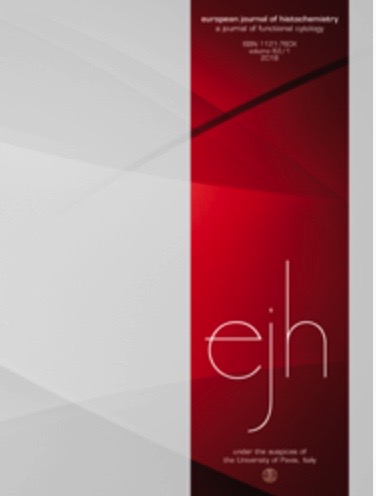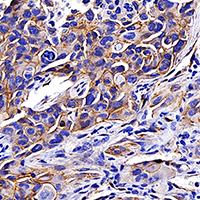 Smart Citations
Smart CitationsSee how this article has been cited at scite.ai
scite shows how a scientific paper has been cited by providing the context of the citation, a classification describing whether it supports, mentions, or contrasts the cited claim, and a label indicating in which section the citation was made.
Tripartite motif-containing protein 6 facilitates growth and migration of breast cancer through degradation of STUB1
Proteins in the tripartite motif-containing protein (TRIM) family participates in carcinogenesis. However, little attention was focused on the role of TRIM6 on development of breast cancer. Expression level of TRIM6 was found to be markedly enhanced in breast cancer cells and tissues. Functional assays demonstrated that overexpression of TRIM6 promoted breast cancer progression through increase of YAP1 (Yes-associated Protein 1), while knockdown of TRIM6 suppressed in vitro breast cancer progression and in vivo tumor growth through decrease of YAP1. Co-Immunoprecipitation (co-IP) showed that TRIM6 interacted with STUB1 (stress induced phosphoprotein 1 homology and U-box containing protein 1). TRIM6 promoted ubiquitination-mediated degradation of STUB1 to promote YAP1 signaling. Overexpression of STUB1 attenuated TRIM6-induced promotion of breast cancer growth. In conclusion, TRIM6 contributed to breast cancer progression through ubiquitination-dependent proteasomal degradation of STUB1 and provocation of YAP1 pathway, providing potential therapeutic target for breast cancer.
Altmetrics
Downloads
Ethics Approval
All procedures performed in this study involving human participants were in accordance with the standards upheld by the Ethics Committee of Fudan-Minhang Academic Health System, Minhang Hospital, Fudan University and with those of the 1964 Helsinki Declaration and its later amendments for ethical research involving human subjects. All animal experiments were approved by the Ethics Committee of Fudan-Minhang Academic Health System, Minhang Hospital, Fudan University for the use of animals and conducted in accordance with the National Institutes of Health Laboratory Animal Care and Use GuidelinesSupporting Agencies
This work was supported by the National Natural Science Foundation of China (NSFC)How to Cite
PAGEPress has chosen to apply the Creative Commons Attribution NonCommercial 4.0 International License (CC BY-NC 4.0) to all manuscripts to be published.









